Where do roses originate?
Millions of years before humans walked the earth, wild roses grew in rugged terrain where little else could. These attractive, hardy plants thrived in Asia before spreading to the northern hemisphere, as far as the American states of Montana and Oregon, where rose fossils dated 35 million years old have been uncovered.
In ancient Greece, stories of its origin were woven into legend, while in Egypt, Damask rose water was a favourite of Cleopatra, who scattered its petals on her palace floor to seduce Mark Antony.
The sacred rose even adorned currency, sitting alongside characters such as Helios, the sun god, as it does on this 304–167BC example found in Rhodes.
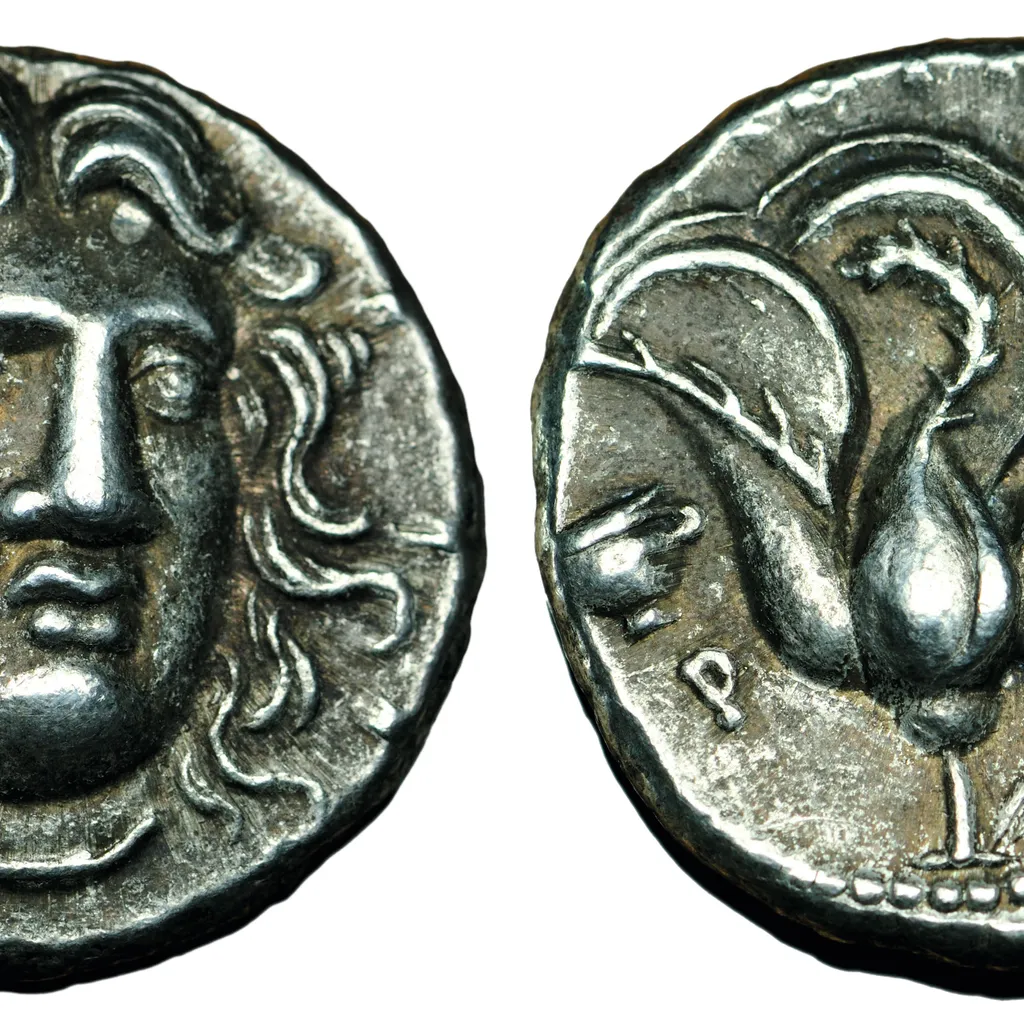
Why were the Tudors represented by a rose?
In medieval England, two families fought for the throne in a war that lasted over 30 years. Today, at Bosworth, flags bearing the red rose of the House of Lancaster and the white rose of the House of York fly as riders re-enact the battle that decided Richard III’s fate.
When Henry VII eventually took the throne in 1485, he united the roses to signify the end of the struggle. Since then, the Tudor Rose has become a royal badge of England, used by British monarchs and appearing on coins to this day, including the new 12-sided pound.
The Arts and Crafts movement embraced it too and you can view this textile design by Charles Voysey, dated 1915, at the Victoria and Albert Museum.
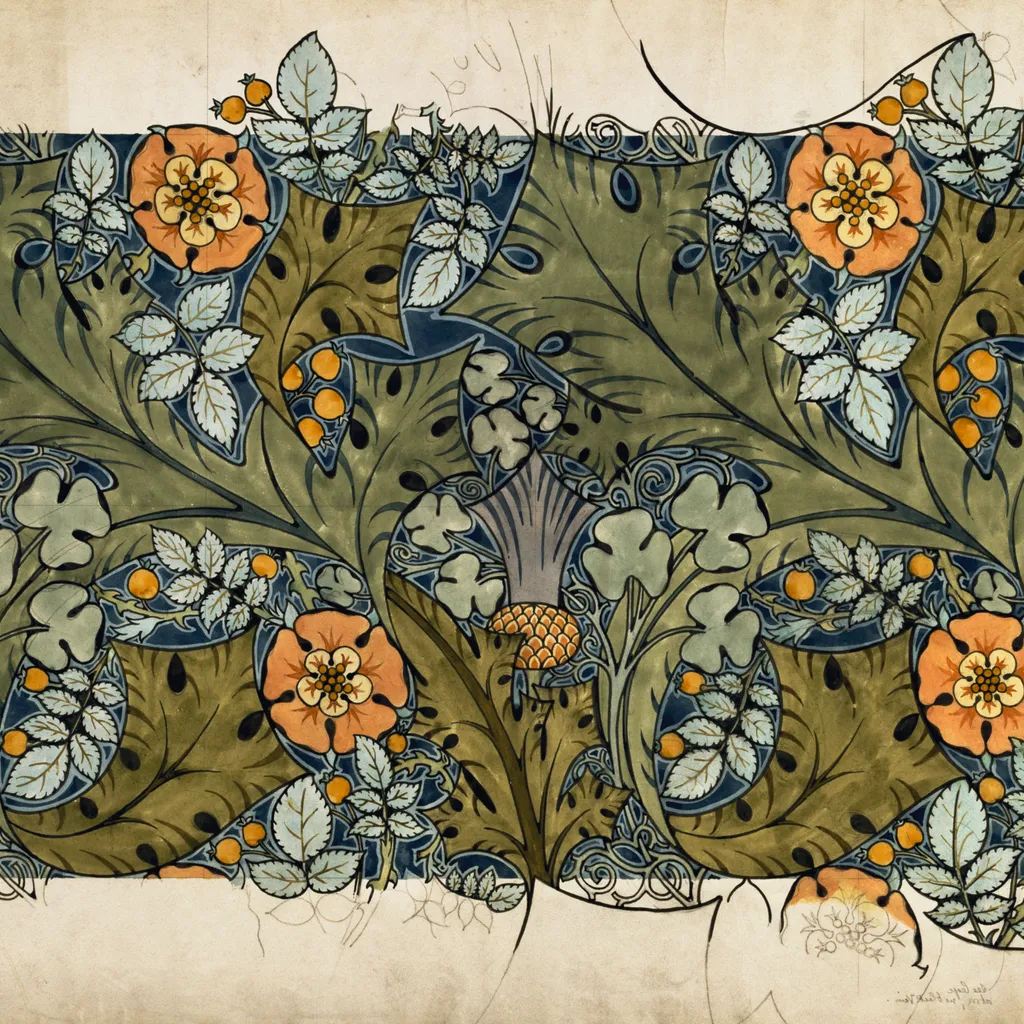
Roses grown in English country gardens
Now a National Trust property, 13th-century Mottisfont in Hampshire started life as a priory and was a popular stop-off for pilgrims as they made their way to the ancient capital of Winchester. After the Dissolution of the Monasteries in the 16th century, the house was converted into a country manor and, over time, some of the country’s most prestigious gardeners worked on its grounds.
When the last owner died in 1972, the National Trust enlisted Graham Stuart Thomas, who had been cultivating a collection of old roses from around the world. Out of favour at the time (as they flowered only once a year), Thomas saw their potential and set about transforming the neglected walled garden at Mottisfont into a tribute to this forgotten flower. His legacy is today said to be ‘the most beautiful rose garden in Britain’, with over 500 varieties.

Roses in the East
With 144 varieties of rose native to China, it’s no surprise that this plant has an important place in Eastern culture. First cultivated in Asian gardens around 5,000 years ago, rose extracts were used throughout the Orient for cooking, perfume, wine and medicine, while in the Mycenaean city of Pylos rose water was traded as early as 1200BC.
Roses were, of course, also admired for their beauty and many a decorative ceramic can be found painted with beautiful rose motifs.
On its own, the Chinese rose signifies longevity, due to its almost monthly flowering, but when pictured alongside the hibiscus (as it is here on these Qianlong double-gourd vases) its meaning is implied as ‘May you have wealth, glory and a long life’.
Earlier this year, this fine pair of 18th-century vases sold at Christie’s London for a record £14,725,000.
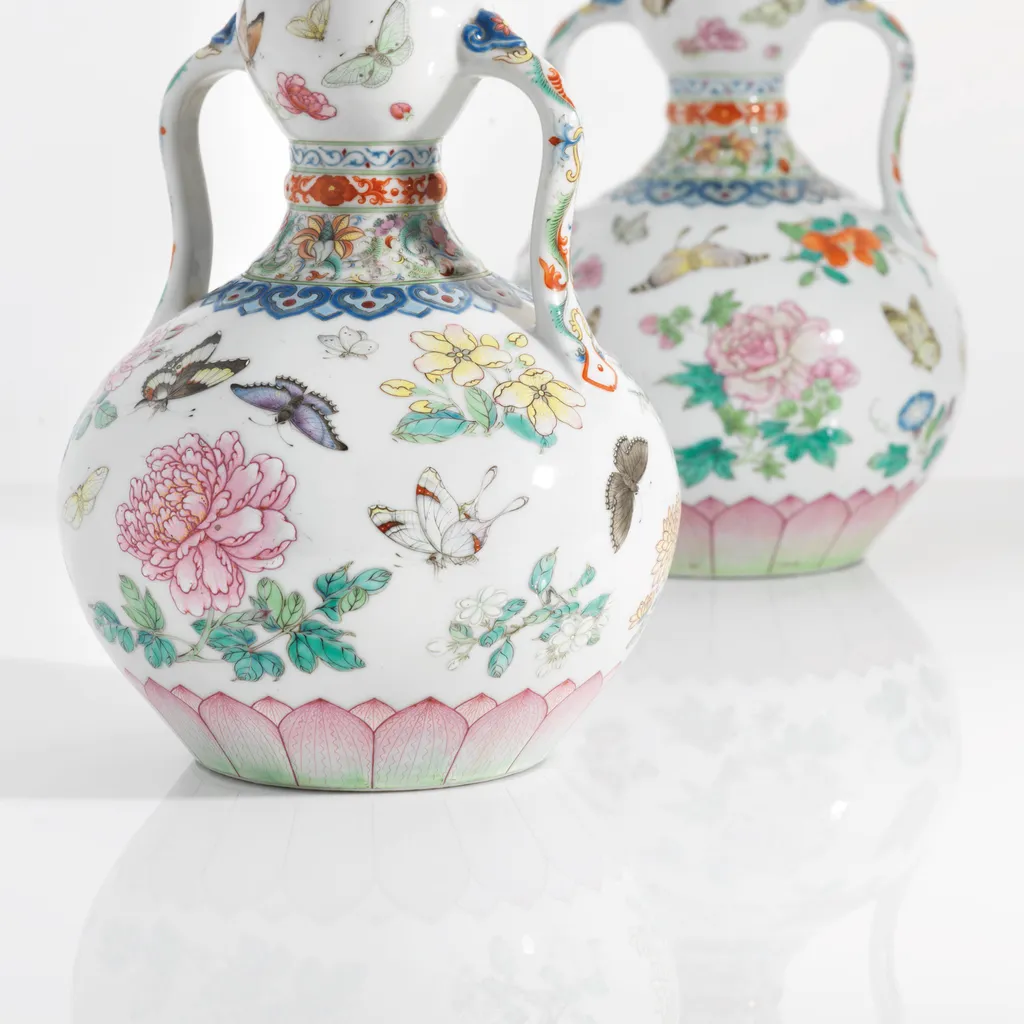
A longing for love
Roses and romance go hand-in-hand, a feeling so well captured by Victorian artist JW Waterhouse in his 1908 painting The Soul of the Rose. The oil on canvas, which sold at Christie’s for £1,140,000 in 2007, is arguably his best-known piece and was inspired by a poem by Alfred Lord Tennyson Come into the Garden, Maud.
Like other paintings by Waterhouse, this work features a woman as the central figure, but here the rose takes centre stage too, evoking feelings of passion, love and longing. Waterhouse went on to produce several other paintings that year, all featuring roses.
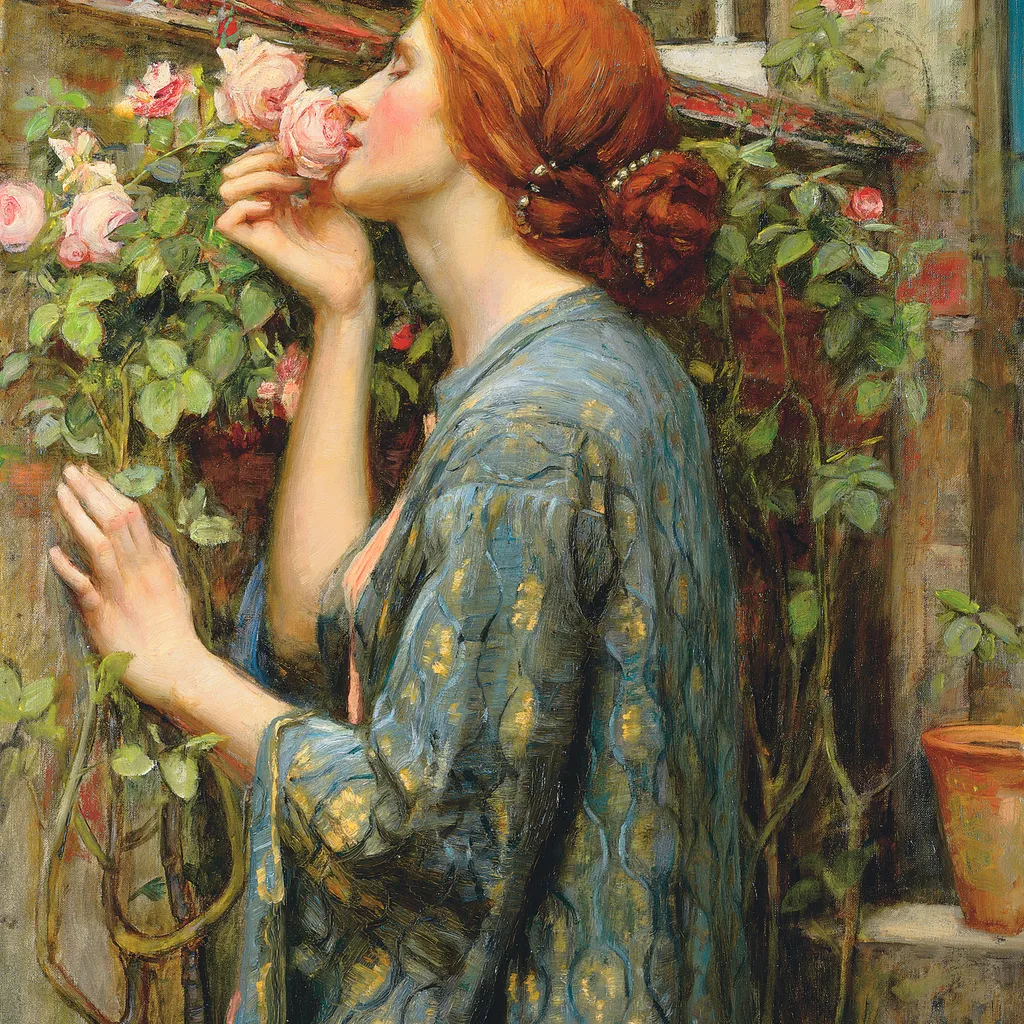
Jardin de roses
Belgian-born artist Pierre-Joseph Redouté had a love affair with roses. Widely regarded as the greatest botanical illustrator of all time, he was the official court artist of Queen Marie Antoinette and, later, Empress Joséphine, first wife of Napoléon Bonaparte.
Like Redouté, Joséphine adored roses and, with the help of the French navy, collected 250 varieties from around the world. She created an unrivalled rose garden at her home Chateau de Malmaison near Paris and commissioned Redouté to illustrate each one.
He painted 117 of them, each as an individual portrait, and published them in his book Les Roses after Joséphine’s death in 1814. Shown here is Rosa centifolia – dated 1824 – widely known as the ‘Provence rose’ or ‘cabbage rose’ for its tightly packed petals.
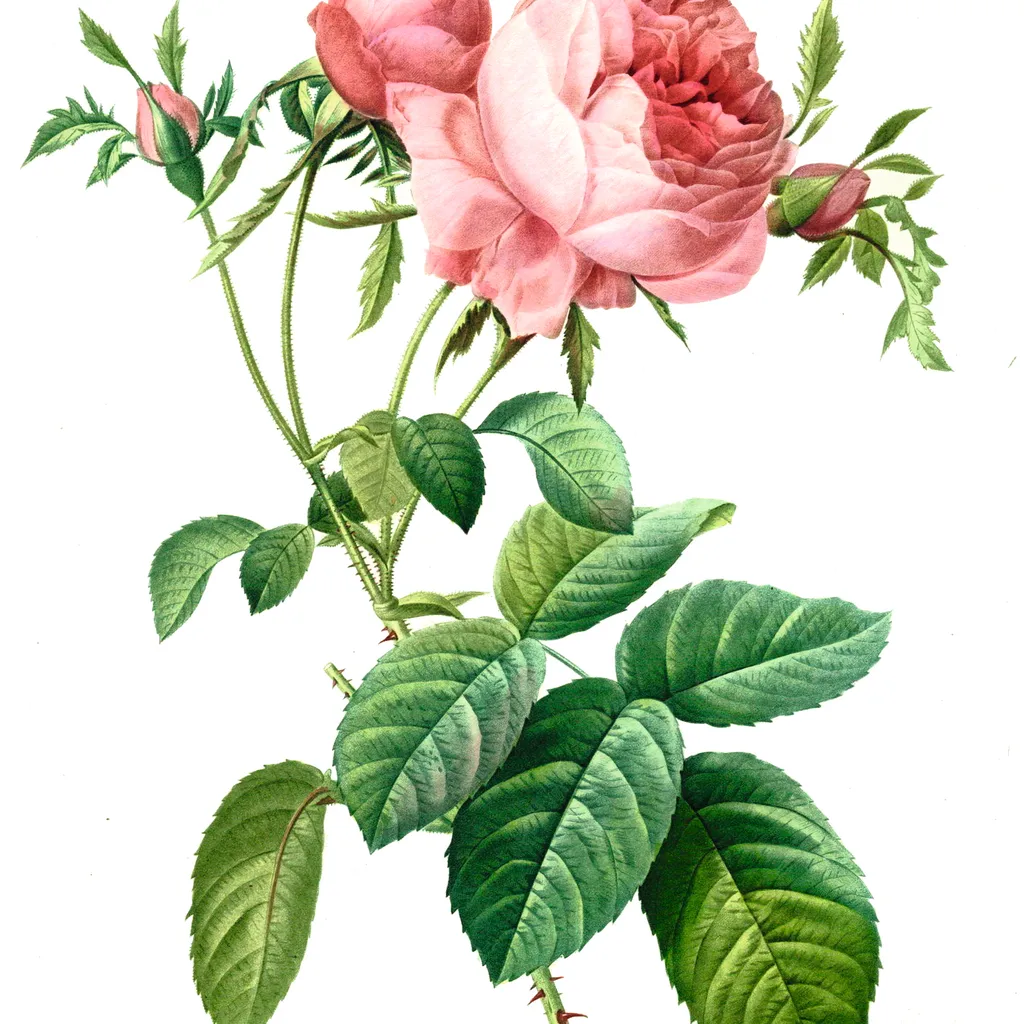
Roses on porcelain
When you imagine an English tea party, you’ll no doubt conjure images of tiny sandwiches and scones served on pretty floral porcelain alongside steaming cups of tea. And it is this typically English china – featuring a delicate rose design – that is Royal Crown Derby’s highest value collection.
Designed on a royal shape with a fluted edge, ‘Royal Antoinette’ has appeared in Pride and Prejudice, Oliver and on Downton Abbey, and is a bestseller in South Korea, Japan and USA.
First introduced in 1959, it is inspired by a much earlier pattern called ‘Melrose’, which featured floral swags with a blue border. The collection is hand-finished with 22 carat gold – teapots cost from £477.

Rose in perfume
No ode to the rose would be complete without appreciating its role in perfume making. During the 10th century, the Arabians mastered the art of distilling rose petals and their techniques and materials were brought back by the Crusaders.
The popularity of perfume spread throughout Europe and by the 17th century, Louis XIV had his own personal perfumer and a scent for every day of the week. French towns such as Grasse and Montpellier competed to supply the royal court, and fields of roses and jasmine bloomed as they experimented with varieties in search of new elixirs.
In the 1900s, with the modern perfume industry booming and mass-market production in place, French jewellery designer and glassmaker René Lalique teamed up with businessman François Coty to create scent bottles that were as sought after as their contents. ‘Panier de Roses’ (right) is an early design dated 1912, a version of which sold at Bonhams in 2004 for over £2,000.
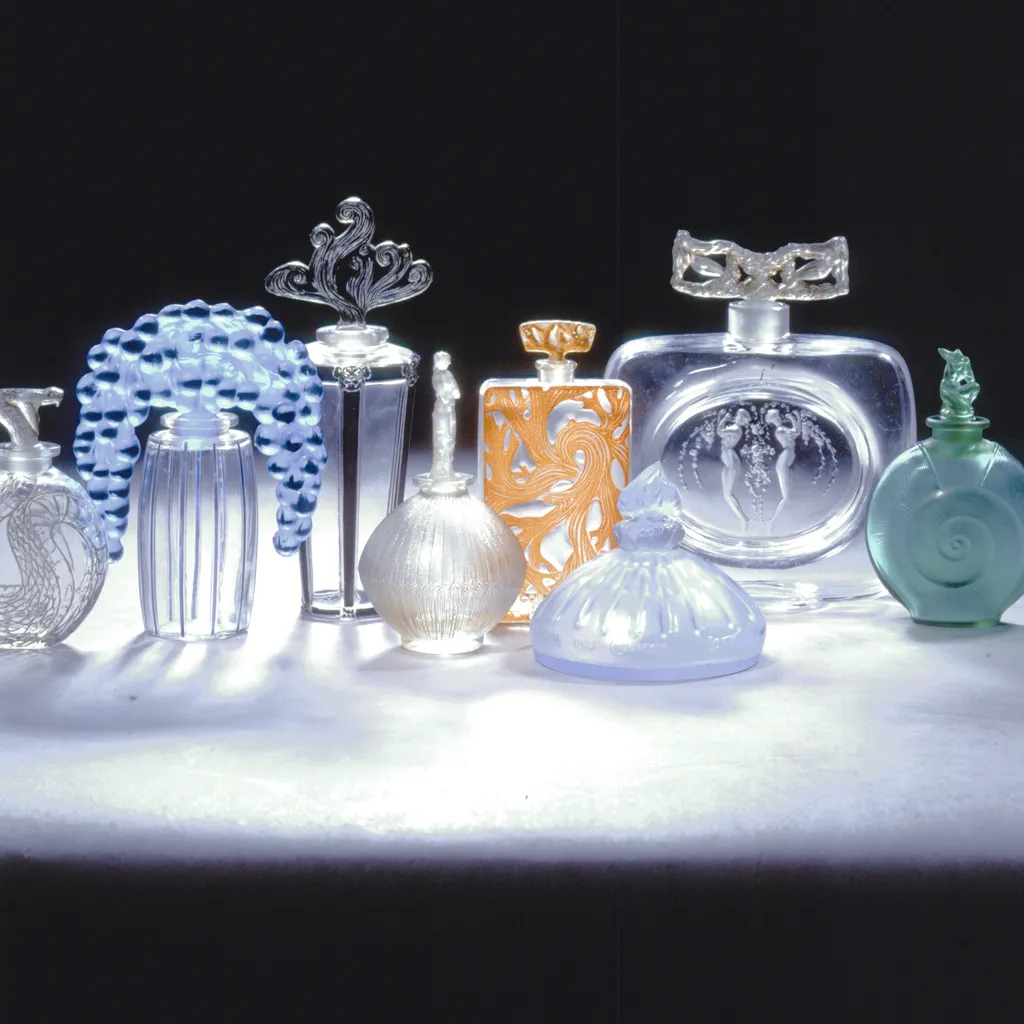
Roses at the asylum
As the sun grew slowly warmer in Provence during the spring of 1890, the artist Van Gogh worked feverishly at his canvas. A year had passed since he’d admitted himself to the asylum at Saint-Rémy, and painting in the gardens had helped him recover from the severe depression that culminated in self-mutilation.
With his mental health much improved, he painted with a renewed vigour, working with bright shades of pink and green, mirroring the spring colours around him.
Of the four still lifes painted during his final days at the asylum, two were of roses. Arguably some of his finest work, they depict big, blowsy blooms typical of the type of cabbage rose found in Provence. The works hung in his mother’s home until her death in 1907, by which time the roses had faded to white.
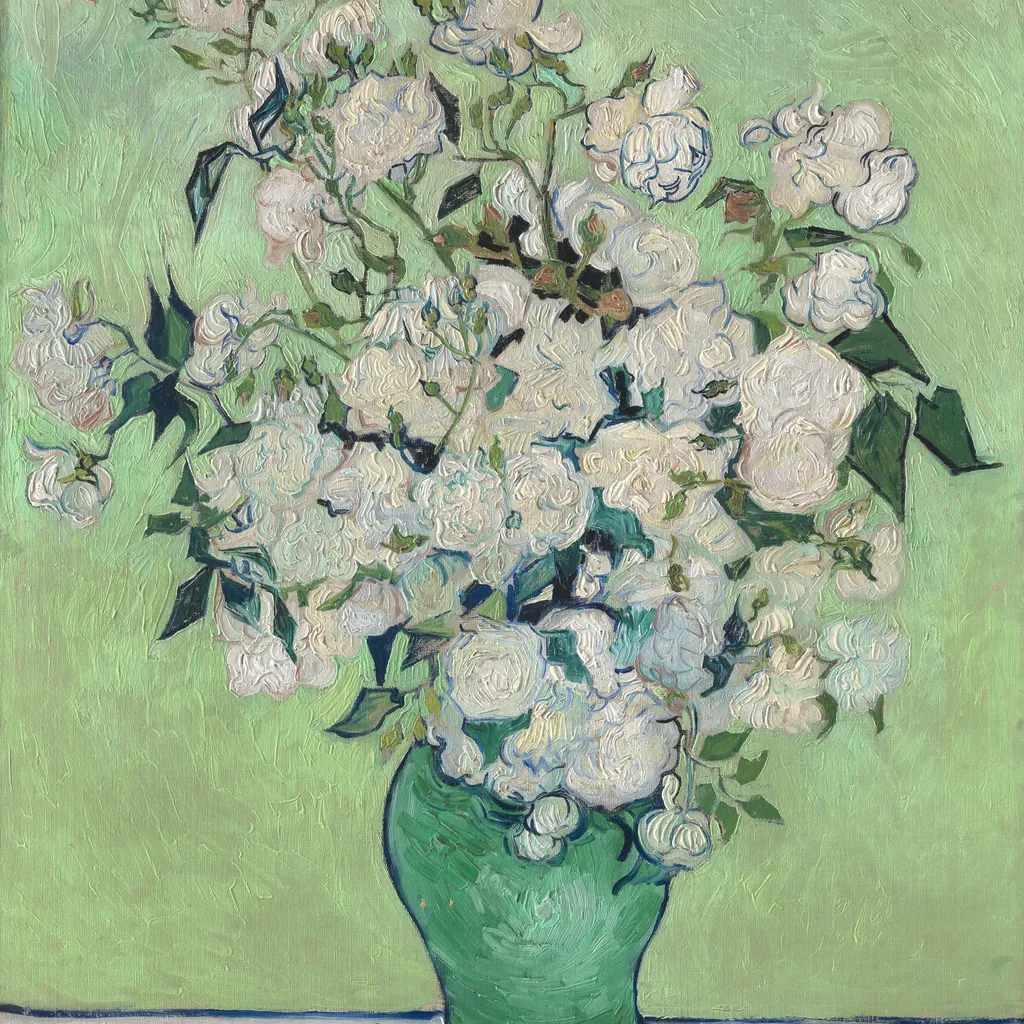
The Beijing Rose Museum
Last year, the world’s first museum dedicated to roses opened in Beijing. The 100-hectare park, which was built to coincide with the 2016 World Rose Convention, features 2,000 species of the plant and is a celebration of the country’s long history of rose cultivation.
The Beijing Rose Museum’s architecture is sculpturally stunning, the building wrapped with a stainless-steel ‘skin’ of cut-out Chinese roses that play with light and shade. The design is based on the concept of old Chinese courtyard gardens, and at night the rose motifs light up like a garden all of their own.
Inside, you can immerse yourself in a 360-degree sea of roses, create your own virtual rose, buy rose wine and tea, and follow the history of the rose through fashion and art. It would seem the rose is very much here to stay, and has a long and prosperous future.
